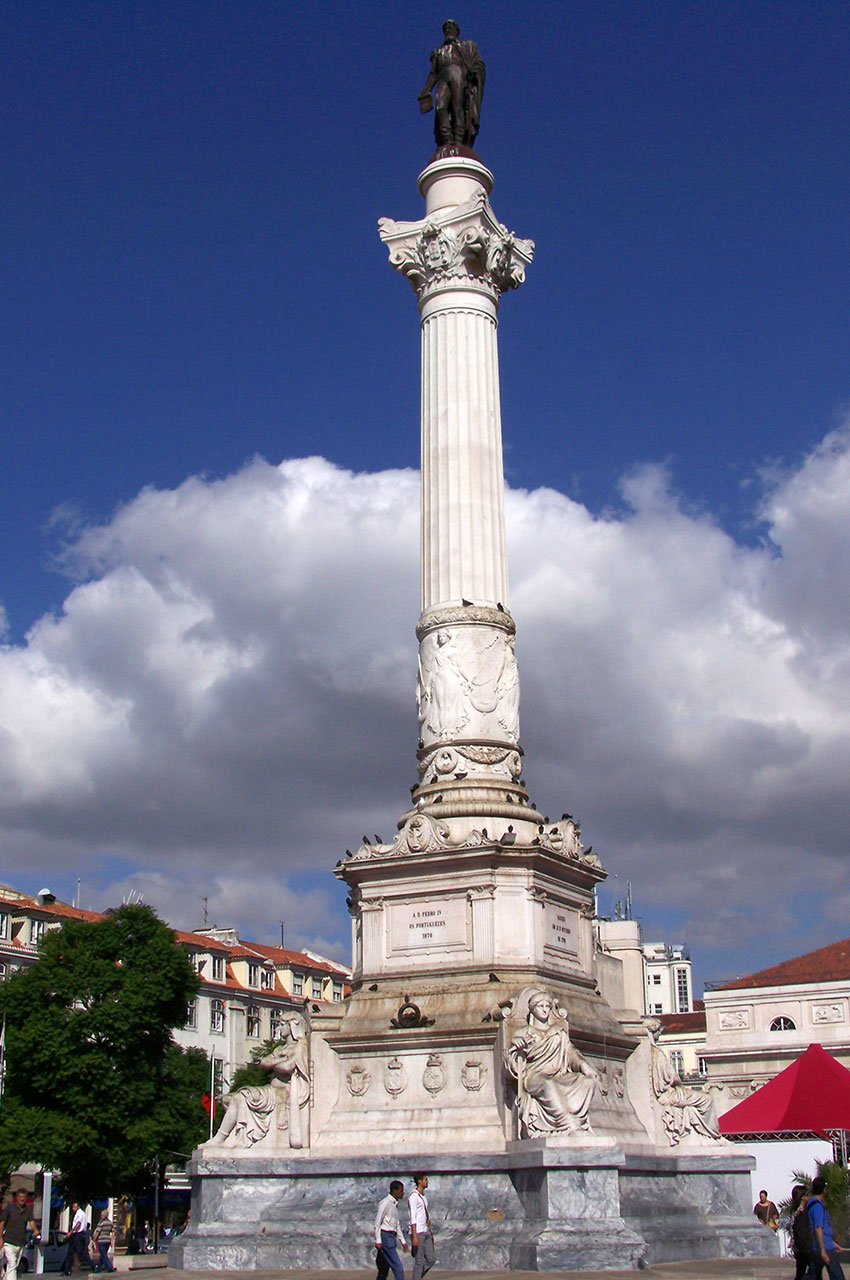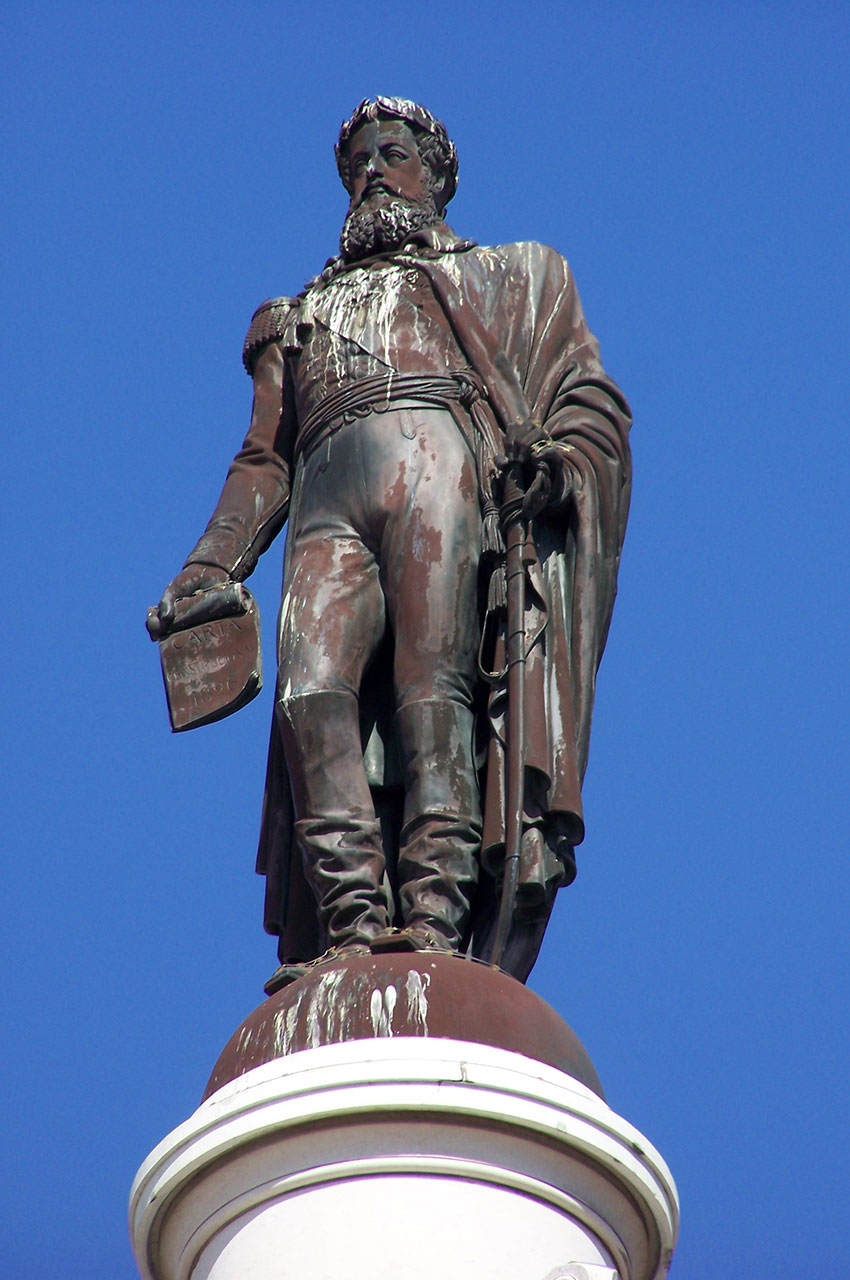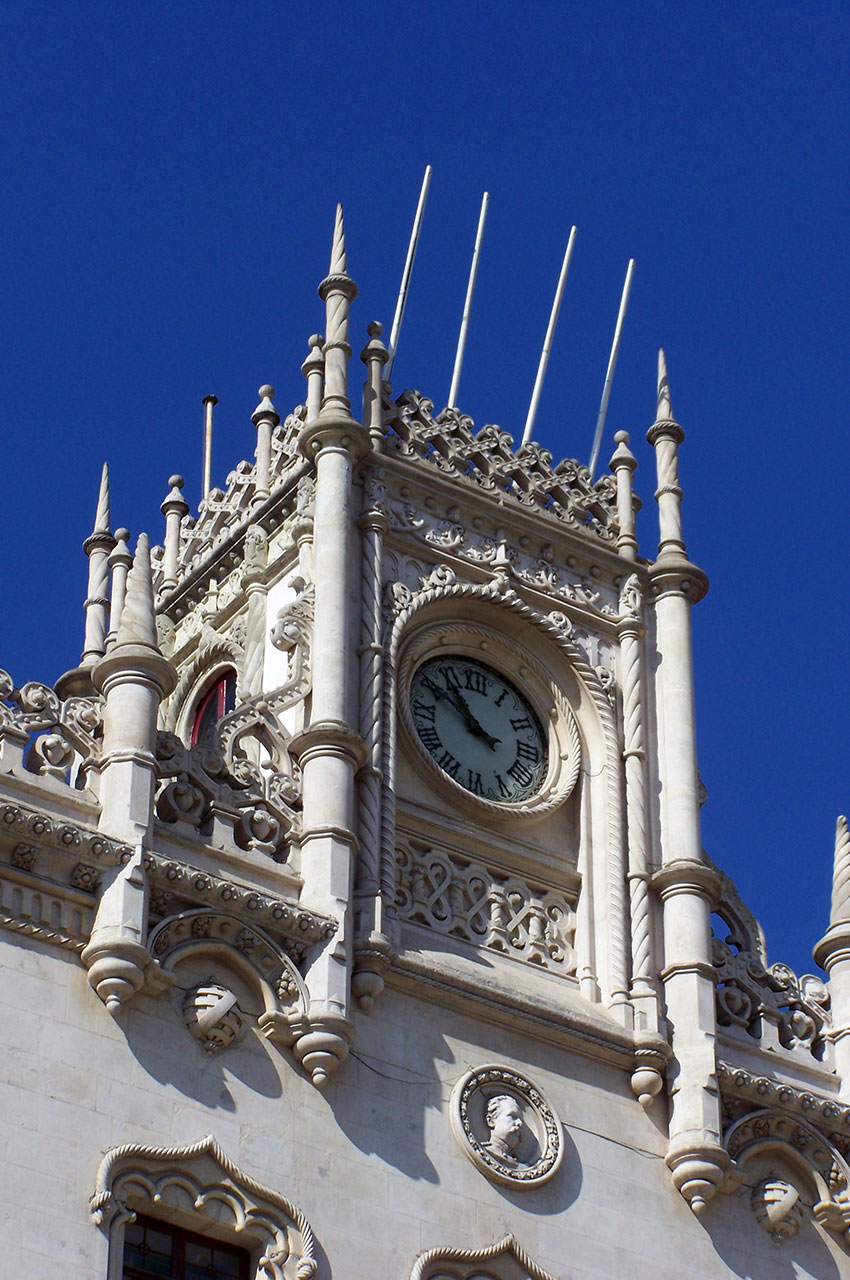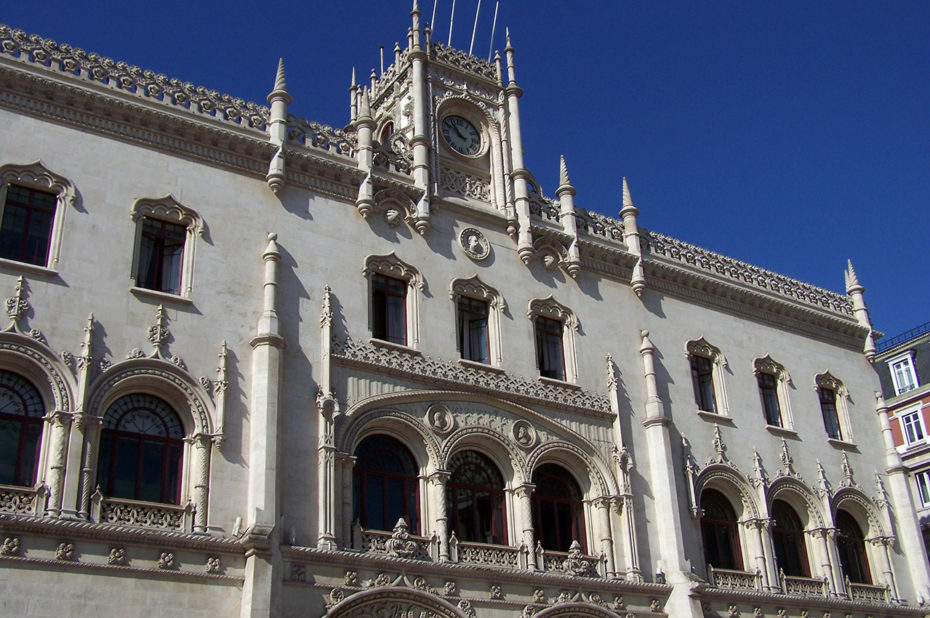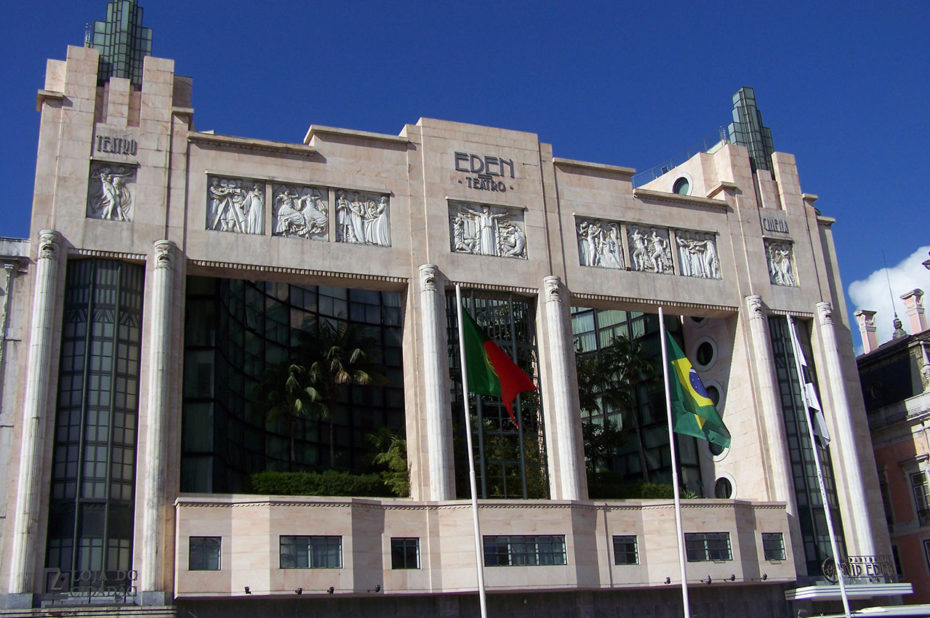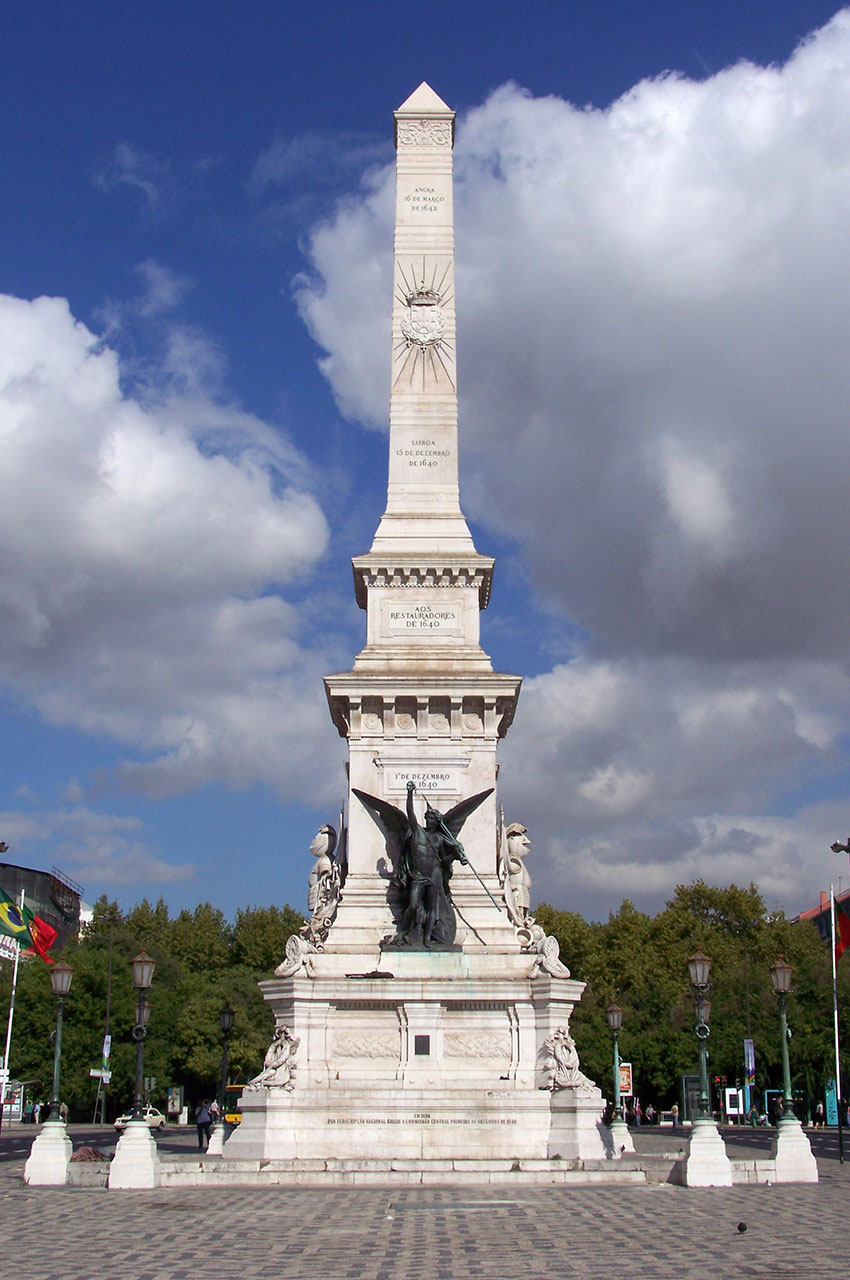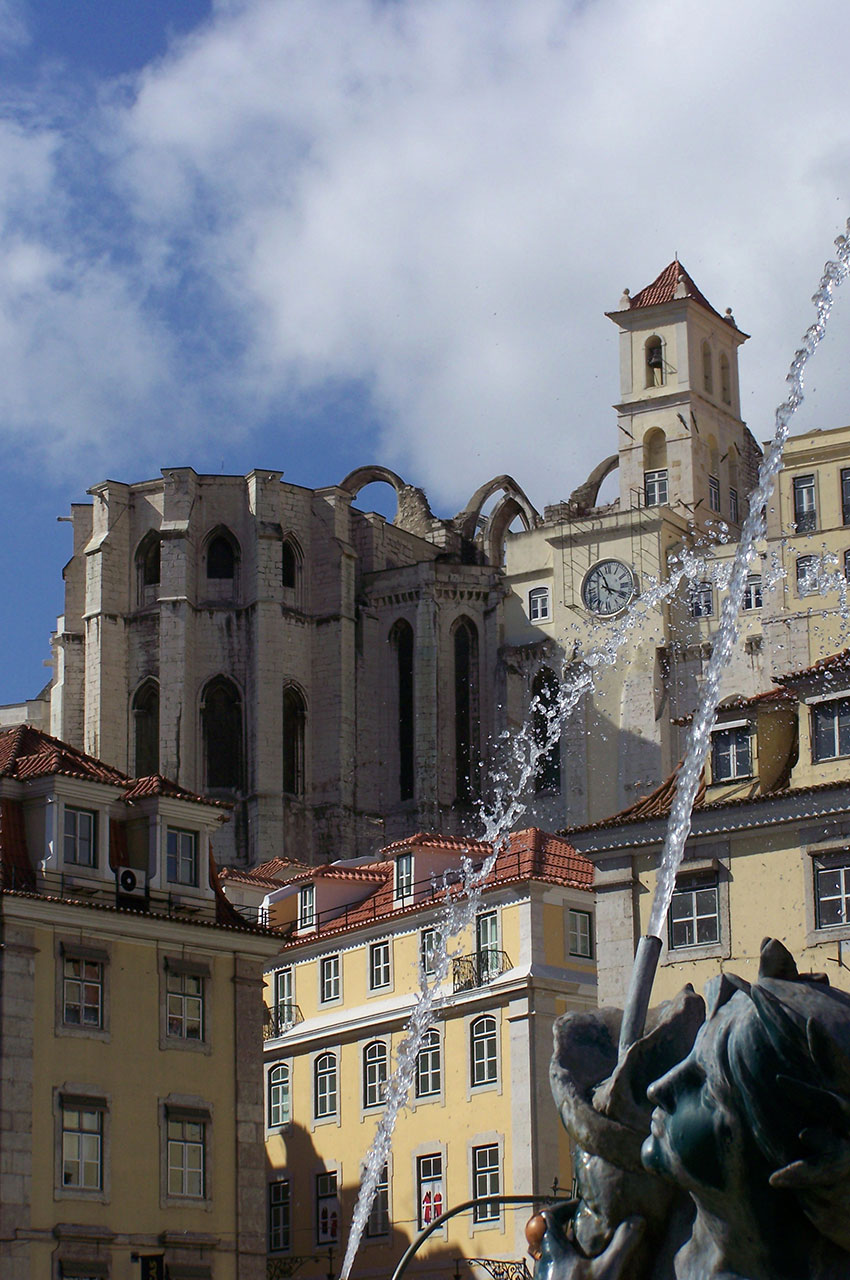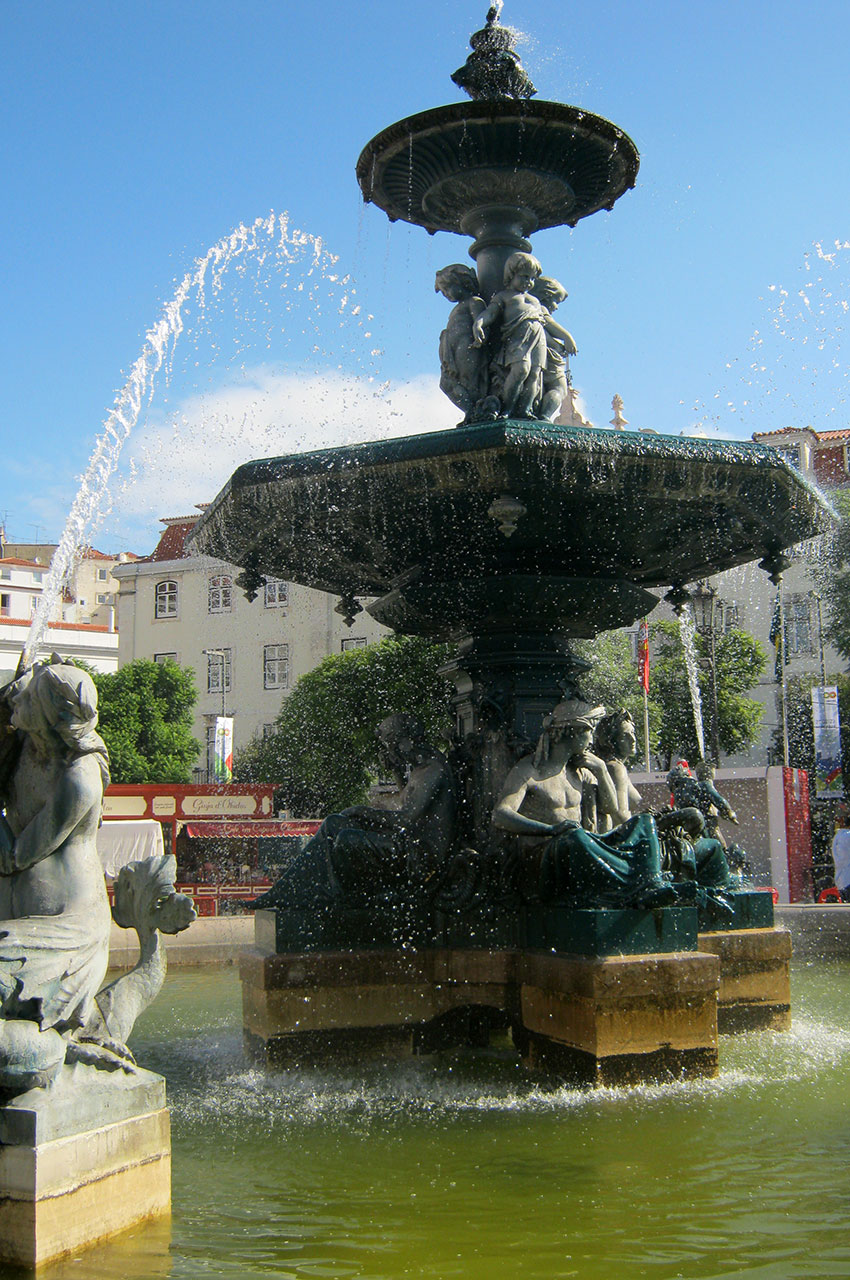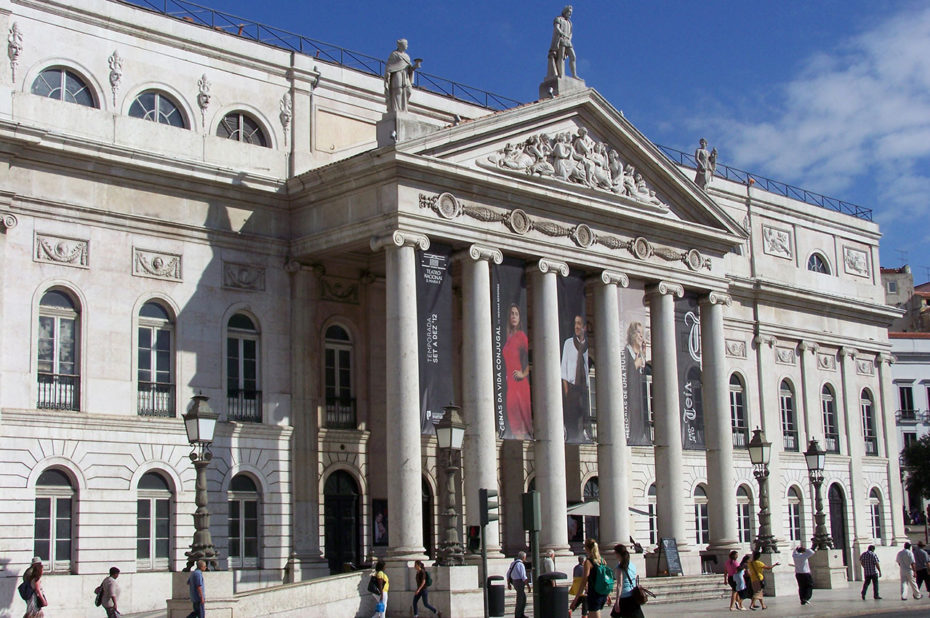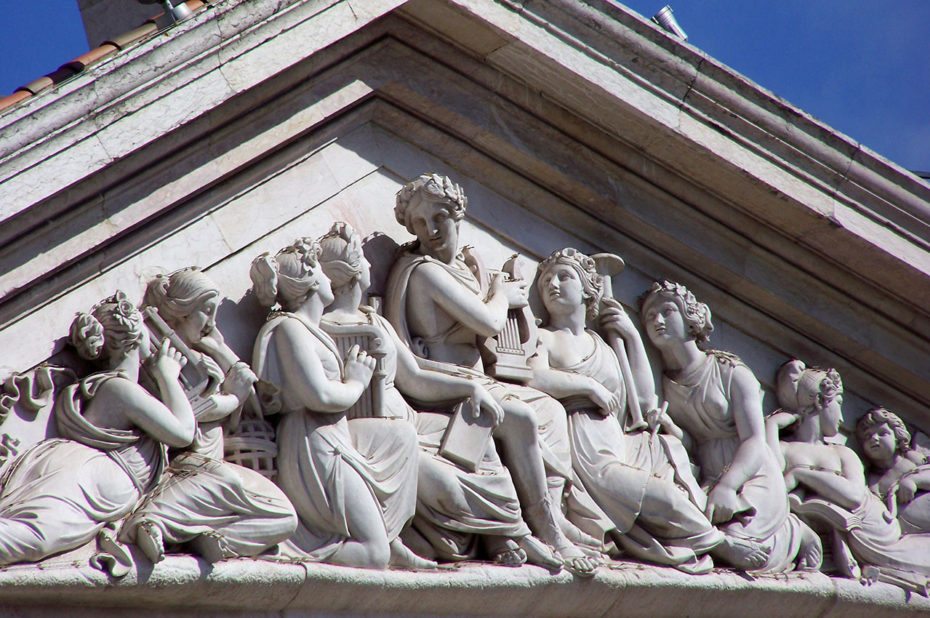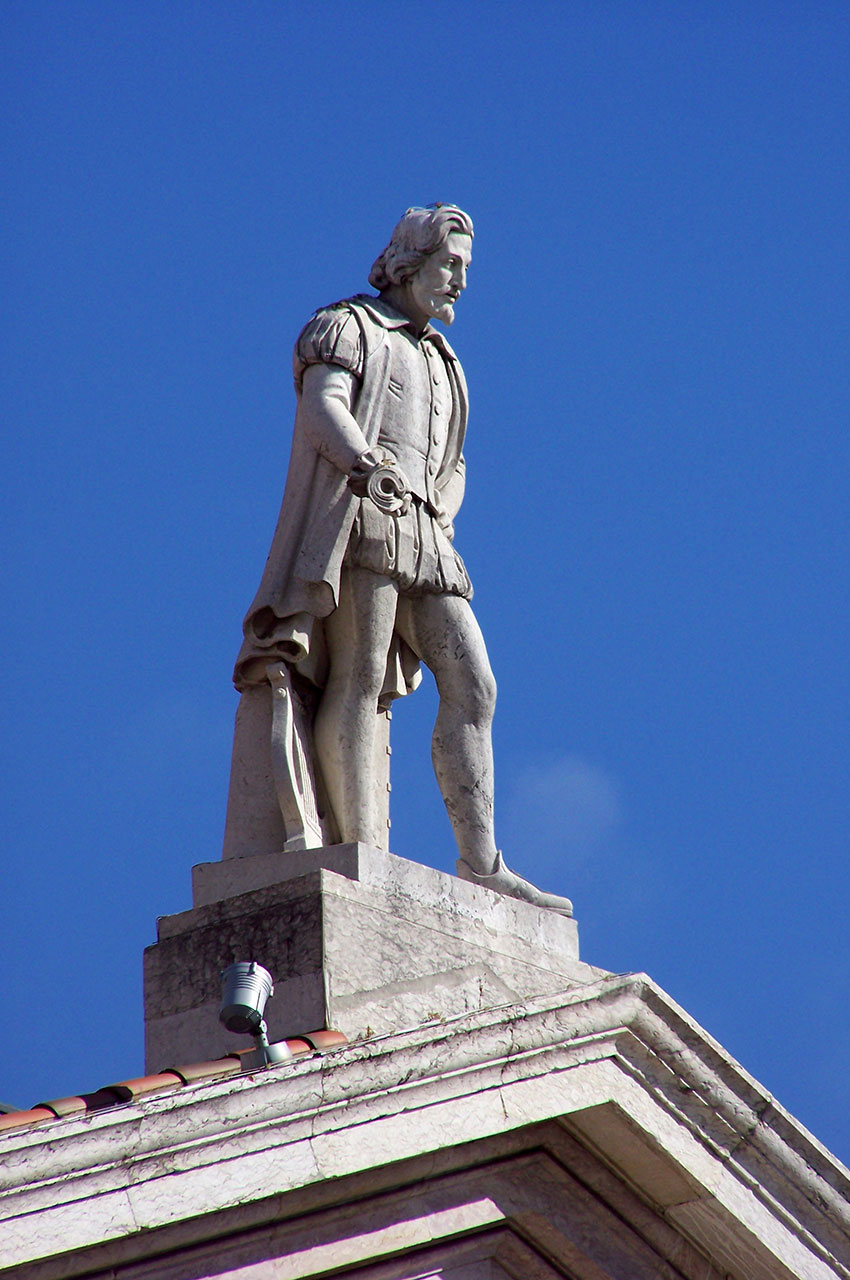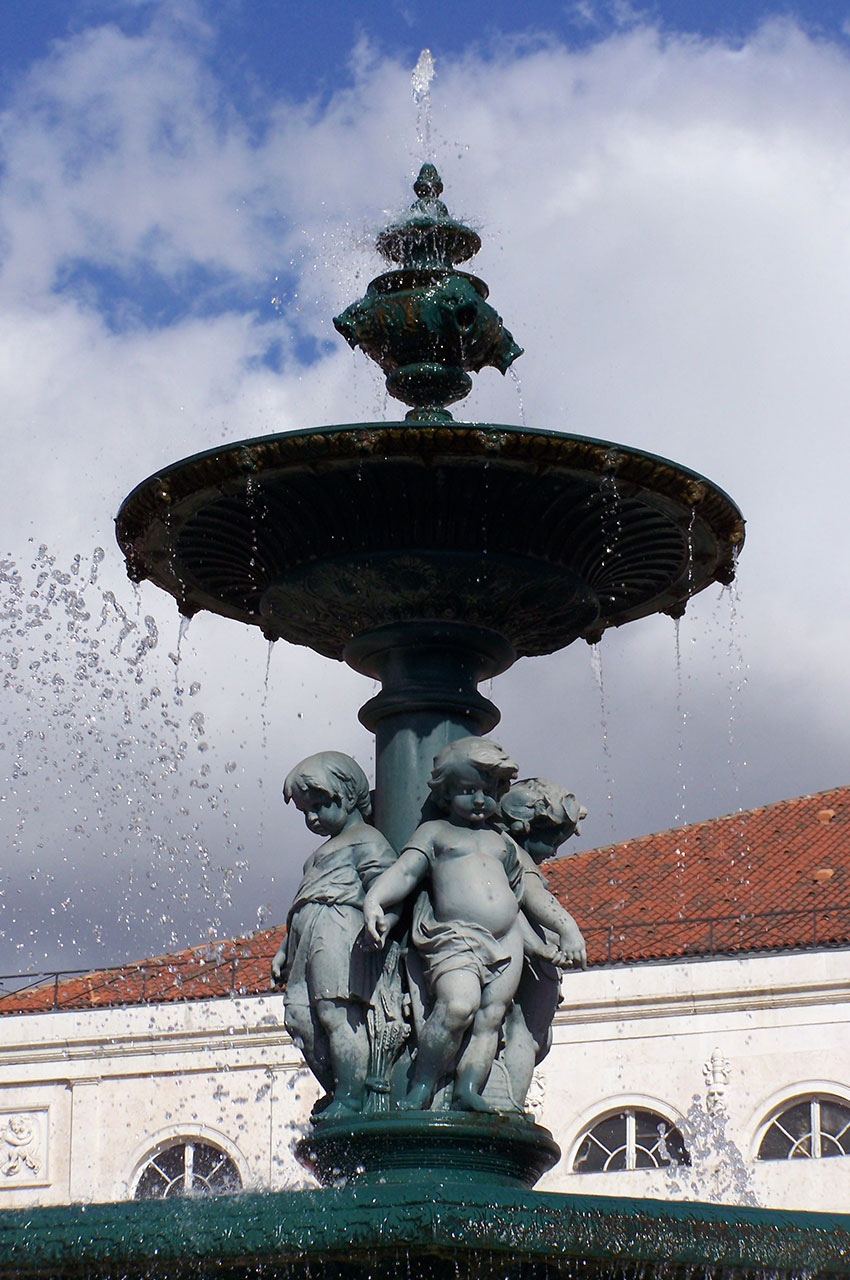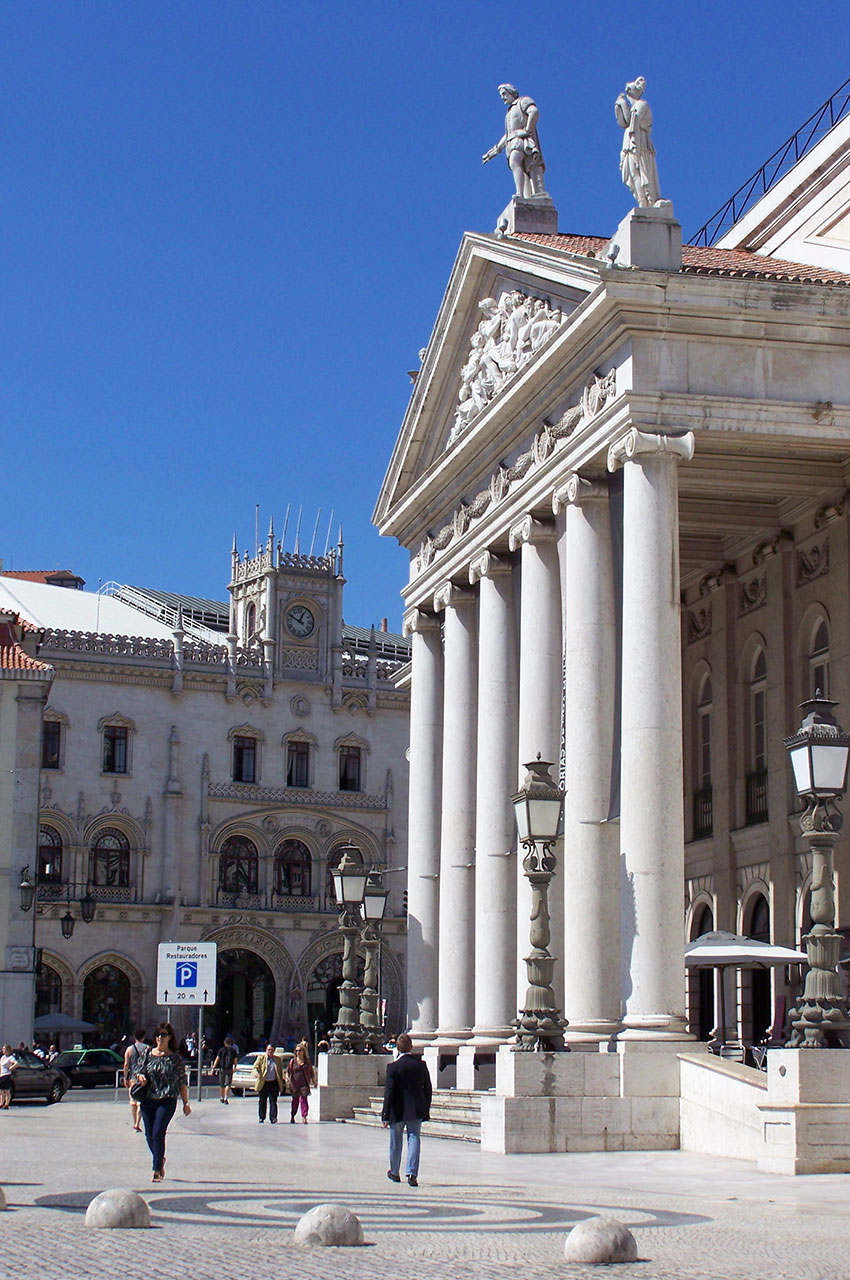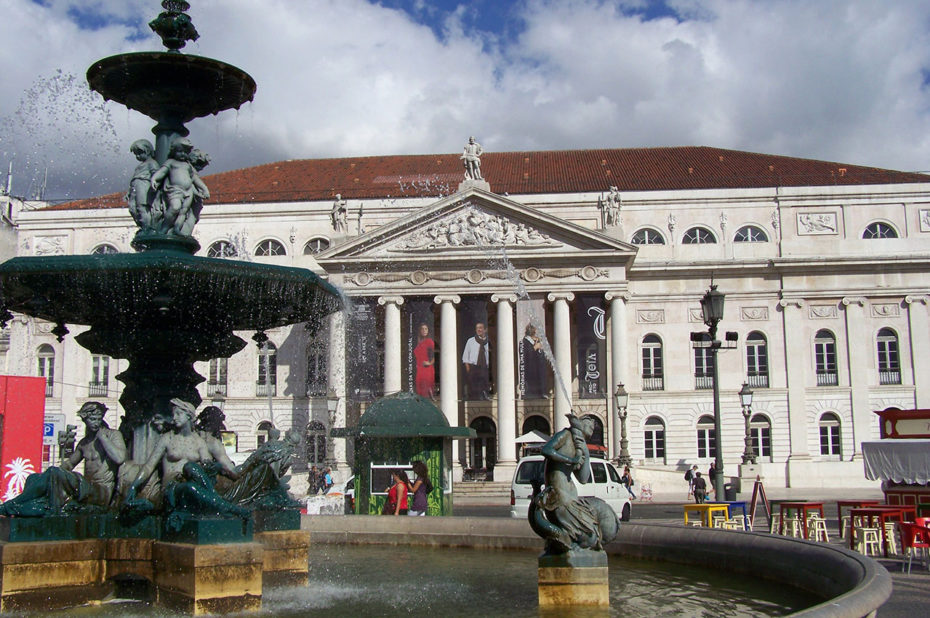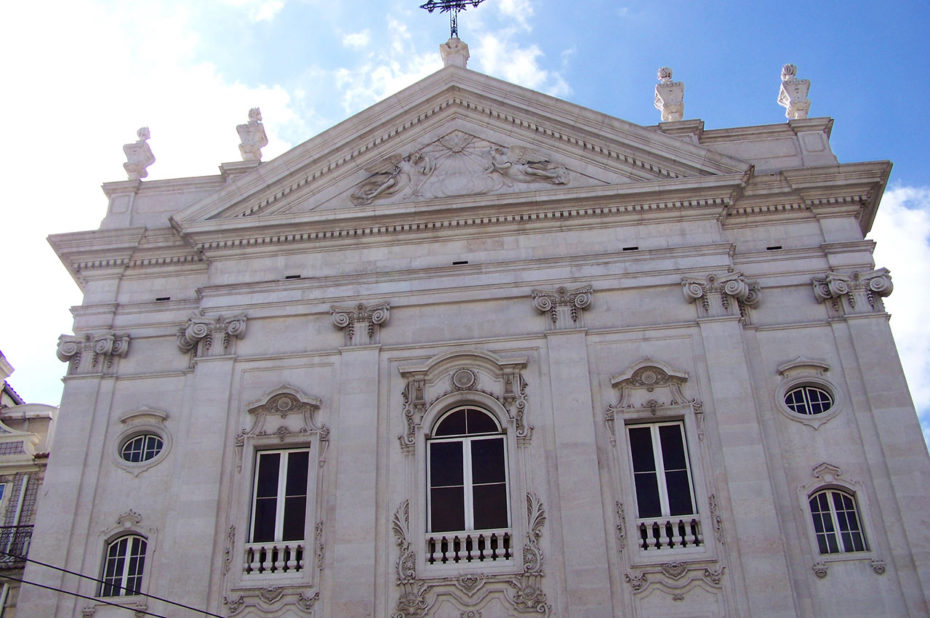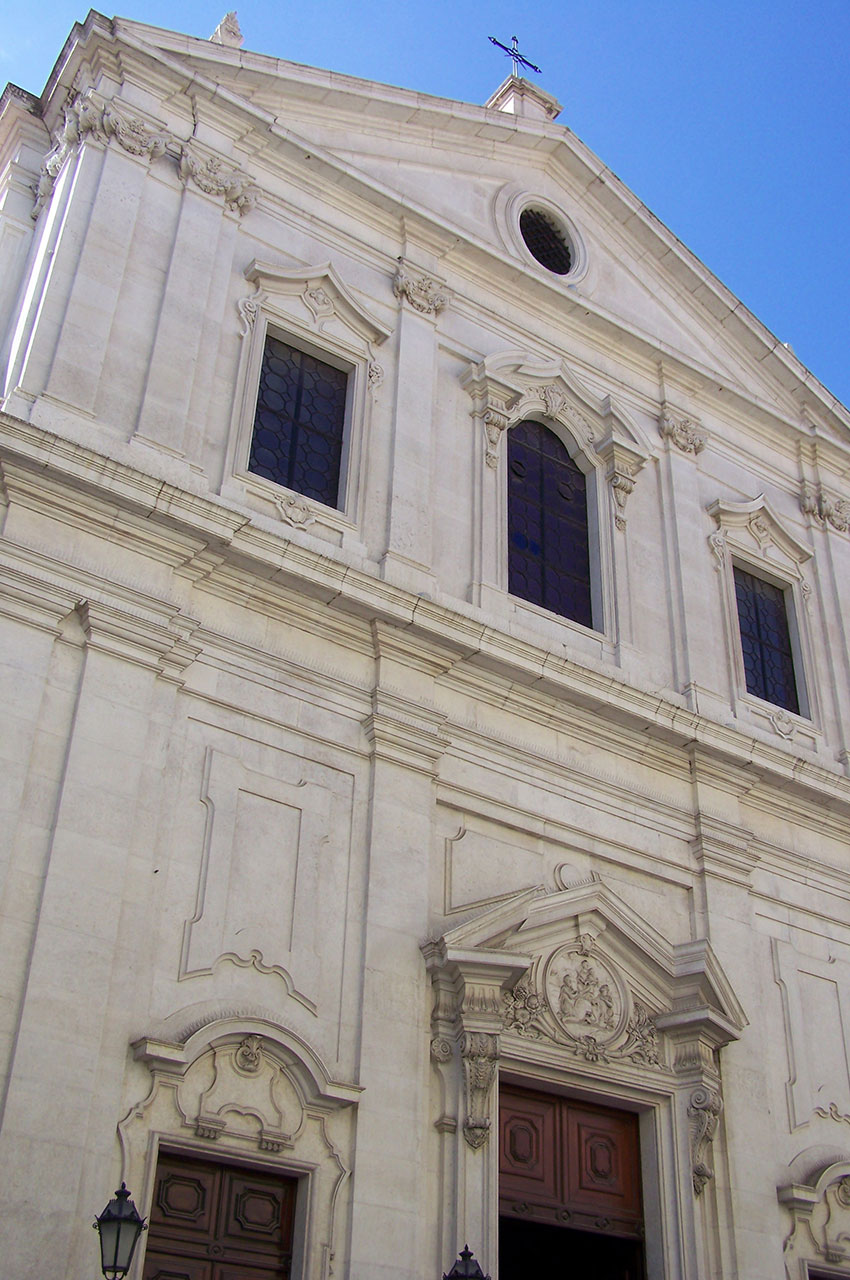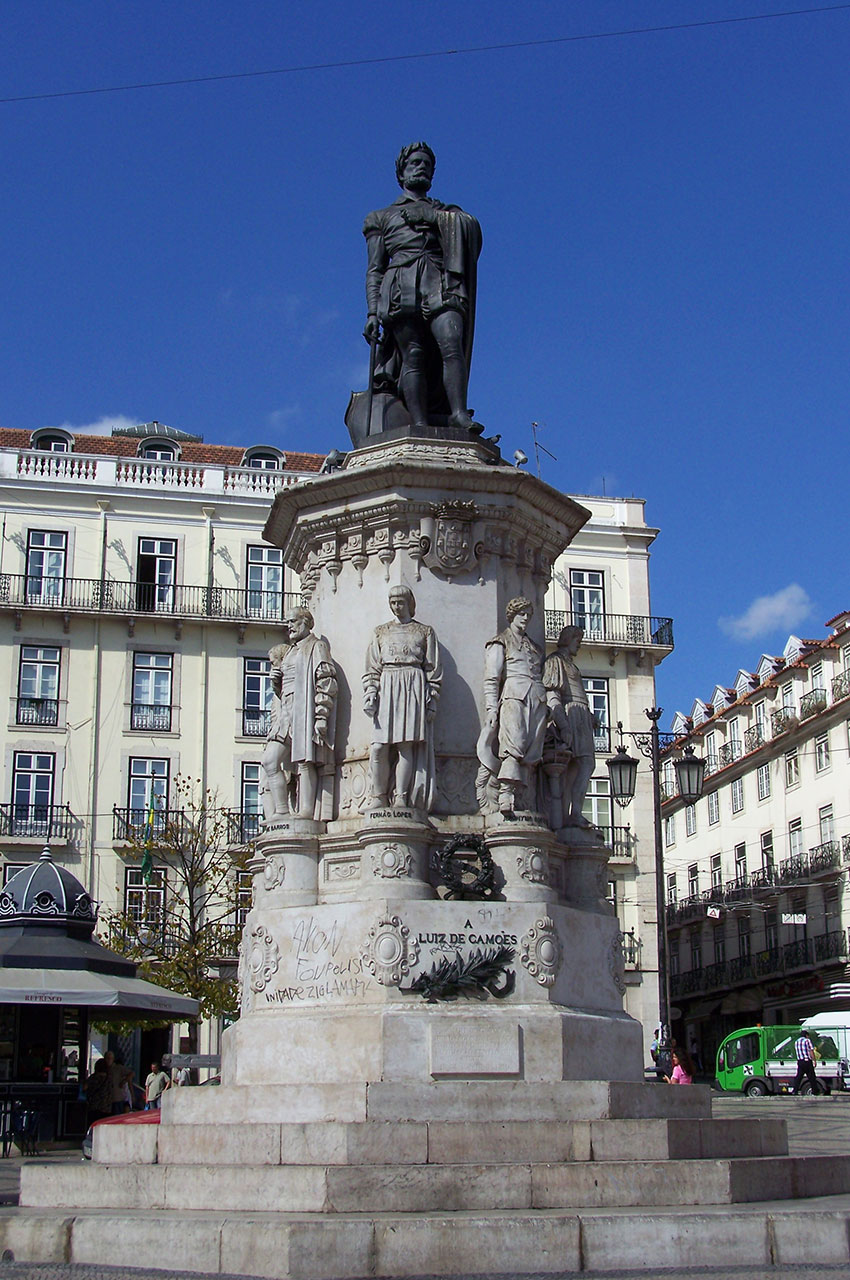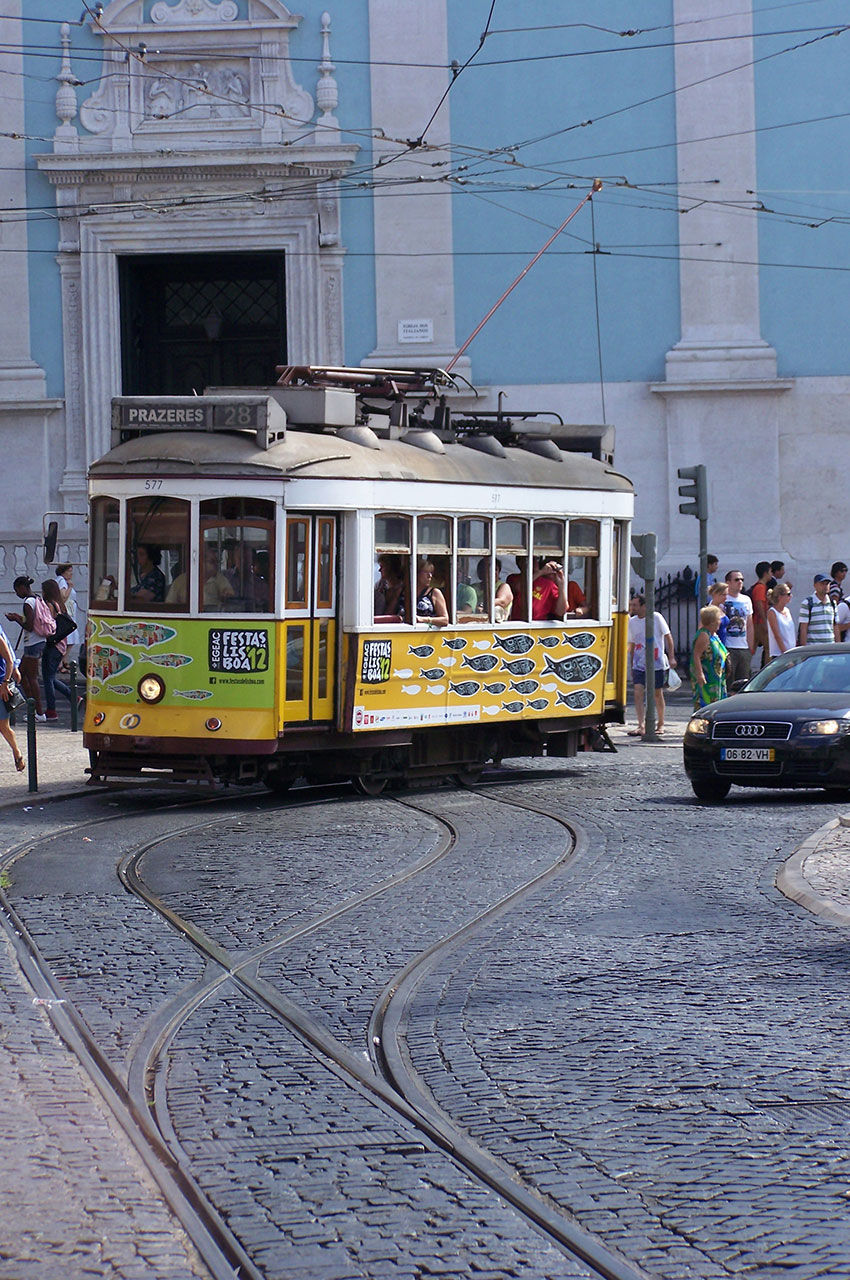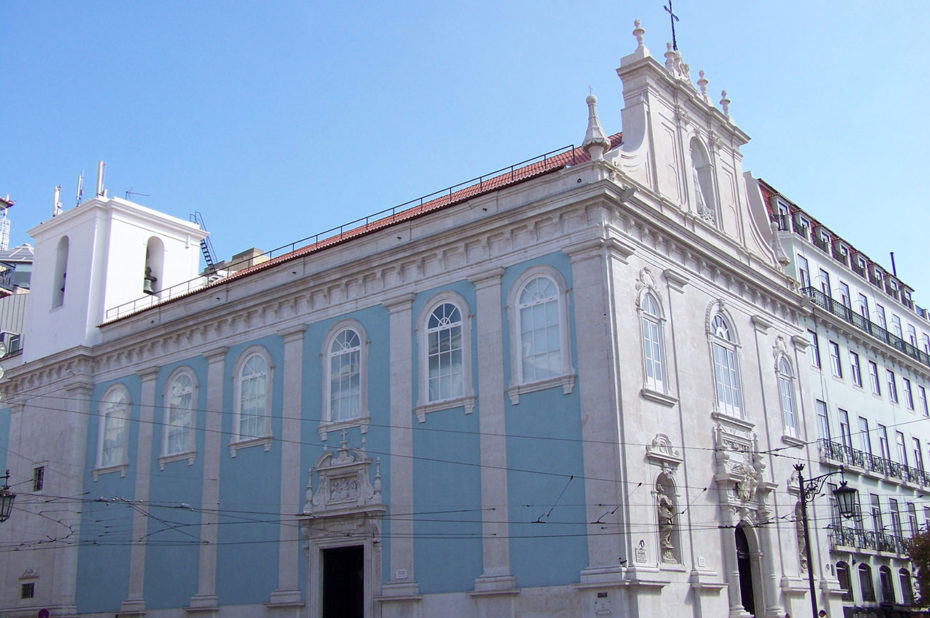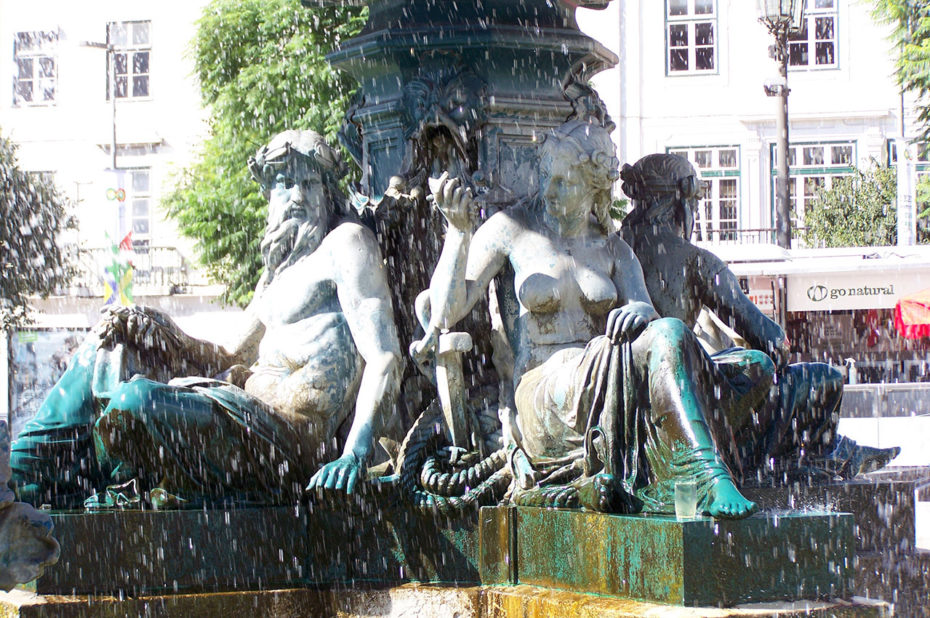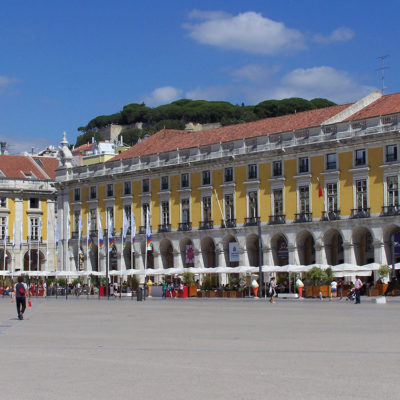
Lisbon’s main boulevard, the Avenue of Liberty, begins at an oval-shaped square known as the Restauradores square. At its center stands a large obelisk, the Restoration Monument, erected in 1886 to commemorate the restoration of Portugal’s independence from Spain in 1640. The largest and most important building lining the Restauradores square is the Palácio Foz, built in Baroque style between 1755 and 1777 for the Marquis of Castelo-Melhor.
Since the Middle Ages, Rossio Square, also known as Dom Pedro IV Square, has been the historic heart of the city, through which thousands of people pass every day, from busy Lisboners to admiring tourists and strolling retirees. The square features two allegorical Baroque fountains and a central statue of King Dom Pedro IV. On the north side of the square is the imposing Dona Maria II Theatre, with its neoclassical lines. All around, you can stop off at some of Lisbon’s oldest and most emblematic cafés and terraces, such as Pastelaria Suiça and Café Nicola.
The Baixa and Chiado districts are located in the heart of Lisbon and were completely rebuilt after the 1755 earthquake. They contain magnificent squares, linked by long avenues lined with 18th-century buildings. Baixa is Lisbon’s most touristic district, where you can stroll through pedestrian streets, small cafés and, later in the day, the heady sounds of the lively nightlife.
The visit to Rossio Square and the Baixa-Chiado district was made on September 21, 2012.
Click on the picture to enlarge it and discover its caption.
